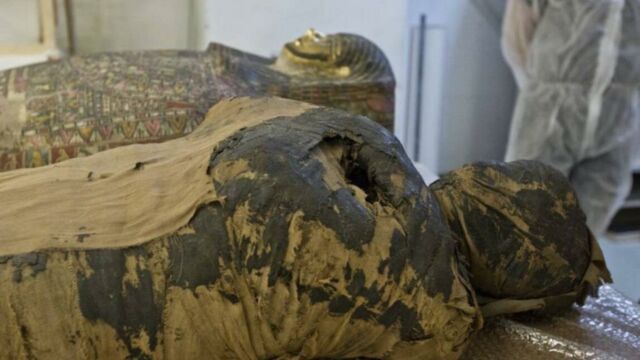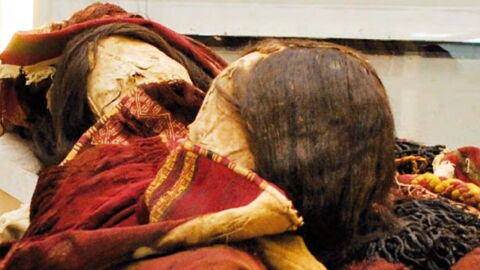Marzena Ozarek-Szilke, an anthropologist and archaeologist at the University of Warsaw, told journalists:
Discover our latest podcast
My husband Stanislaw, an Egyptologist, and I, while examining X-ray images, noticed in the belly of the deceased woman a frame familiar to the parents of three children - a small foot!
A woman 26 to 30 weeks pregnant
Further analysis revealed the presence of an entire foetus. According to scientists working on a project around the Warsaw mummy, the woman was between 20 and 30 years old and 26 to 30 weeks pregnant at the time of her death.
Wojciech Ejsmond of the Polish Academy of Sciences, who is also involved in the project, admitted:
We don't know why the foetus was not taken out of the belly of the deceased during mummification. This mummy is really unique. We have not been able to find similar cases. This means that our mummy is the only one recognised in the world with a foetus.
Ozarek-Szilke speculated that there may have been an effort to 'disguise the pregnancy... or, perhaps, it had some significance related to beliefs and rebirth in the afterlife.'
Long hair, down to her shoulders
Based on an analysis of the hieroglyphs on the sarcophagus, the mummy was initially thought to be that of a priest who lived between the first century BC and the first century AD. Scientists now believe that it may be even older and are trying to find out the possible causes of death. The mummy has not been opened, but an X-ray showed that the woman had long curly hair down to her shoulders.
This is the first known case of an embalmed body of a pregnant woman... This opens up new possibilities for research into ancient pregnancy and motherhood practices
The discovery was announced in the latest issue of the Journal of Archaeological Science, a peer-reviewed journal.
The mummy was brought to Poland in the 19th century and is part of the Warsaw University antiquities collection. It has been kept in the National Museum since 1917, and is displayed together with the sarcophagus.















